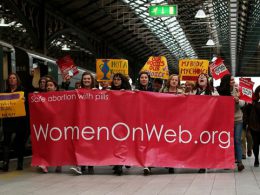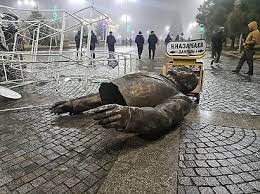‘Domestic violence is a serious crime against women and children in Irish society but one that is hidden and minimised.’ The words of Margaret Martin, the Director of Women’s Aid as she launched the organisation’s Annual Report 2012.
She adds in the introduction to that Report, ‘People often ask, “Why doesn’t she just leave?” If only it was that simple. The recession has greatly reduced options for women experiencing domestic violence, with many reporting that they have become more trapped in abusive relationships. It is heart-breaking to listen to women who along with their children have nowhere to go and who are living in fear of poverty and are at risk of becoming homeless.’
This is a truly shameful situation. Shameful first of all because of the extent of violence reported against women and children in this State. According to Women’s Aid one in five women will experience violence and abuse from an intimate partner at some stage in her life. In 2012 the Annual Report catalogues an average of 32 calls each day from women living in fear of violence and a shocking 16,200 disclosures of emotional, physical, sexual and financial abuse.
The detailing of the kind of abuse suffered makes for very painful reading but points up a situation that cannot be shirked. Hundreds of physical assaults and rapes were chronicled. Physical abuse reported involved being locked in the home, being punched, thrown, slapped and kicked even at times while breast feeding. Financial abuse involved being denied access to household monies for heating, food and clothing for the children.
Horrifying also is that Women Aid reports an increasing number of disclosures of children being directly abused and exposed to domestic violence. ‘In 2012 women told us on 3,230 occasions that their children were being hit, including with household items, smacked, constantly shouted at, and in some cases, sexually abuses. Children have witnessed their pets being abused, kicked and thrown against walls.’
These are horrifying testimonies which speak volumes about a disturbing level of brutalisation among a significant minority in Irish society. It would be crude to reduce dysfunctional personal relationships or the perpetration of violence on women simply to the effects of the brutal logic of the cut throat values which inform capitalist society. However it is far from the case that they are unrelated. Economic and social structures which have exploitation and profiteering at the expense of human beings at their very core are conducive to warping human sensitivity and particularly male attitudes. Radical social analysts have for long rooted male dominance in the structures and inequalities of societies broken down along lines of social class based on oppression and exploitation.
It should be obvious that a society based on human cooperation and real equality of wealth and status would be one where violence against women would be hugely reduced. Part of the struggle for achieving such a society would involve robustly challenging any and every attitude that encourages such behaviour and providing substantial support for victims. The record of the Irish State in this regard has been shameful.
Women’s Aid points to economic crisis causing extra hardship for victims of domestic violence. It is certain that the straitened financial circumstances or outright poverty of individuals and families do exacerbate personal difficulties. Even more distressing is that women suffering violence are trapped in situations where their homes become torture chambers from which they cannot escape because they do not have the economic resources to find alternative accommodation and the wherewithal to live. The disastrous policy of austerity, being implemented for five years now, has undoubtedly made the situation far worse, contributing to mass unemployment and the poverty and the narrowing of choice that inevitably follow.
Austerity also restricts the extent of funding from the State to tackle this cancer from all angles. It is quite outrageous that organisations that work with victims of domestic abuse are left short staffed and short funded. There aren’t enough refuges where victims can reach safety and those that provide such a vital service are often under severe financial pressures. This is an indictment of successive governments. Were it not for the heroic work of advocates for women and children suffering domestic violence, many more would be left in the hands of their tormentors. The contrary is also true. If sufficient funds were invested in providing alternatives for victims, countless more would be able to escape their hell and remake their lives.
The Women’s Aid Report forces uncomfortable facts into society’s consciousness. That is vital in challenging both general attitudes and forcefully pointing to the responsibilities of the State. This does not diminish another troubling fact which is that there are also adult male victims of domestic abuse. While the incidence is massively less, the suffering here needs also to be recognised and equally addressed.












